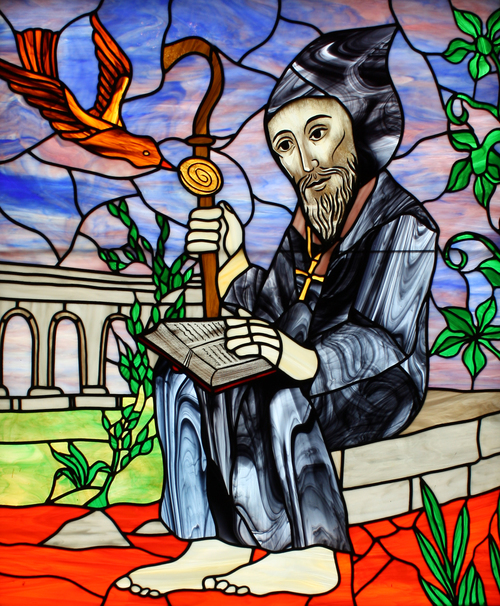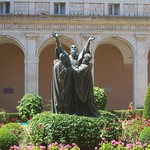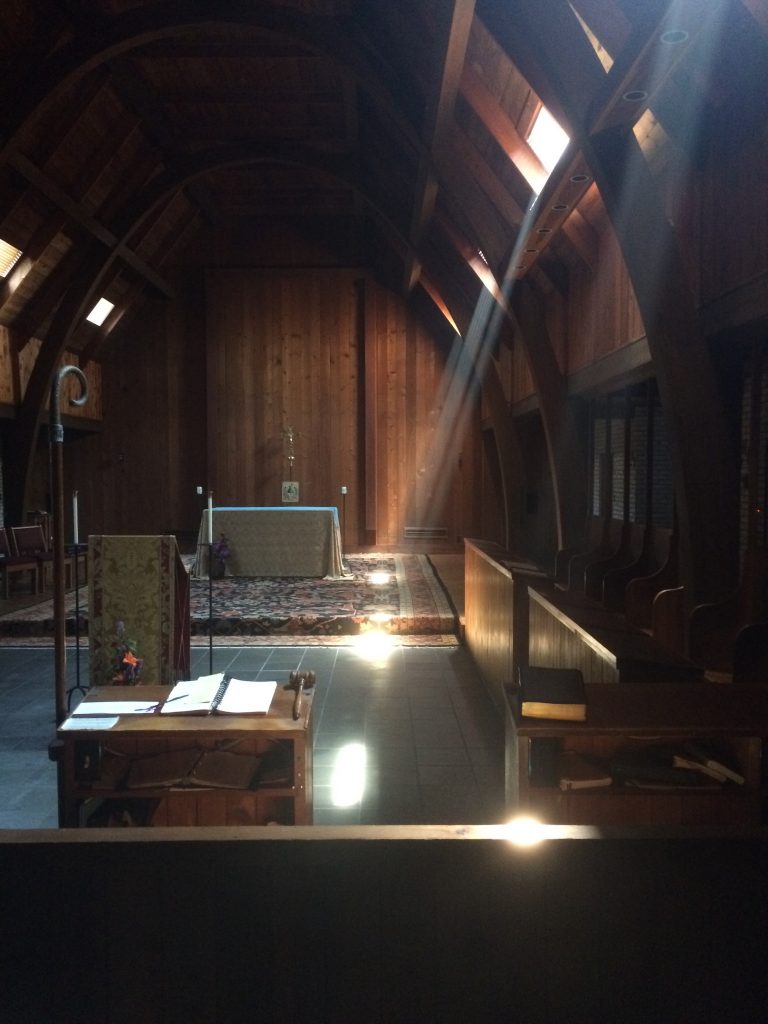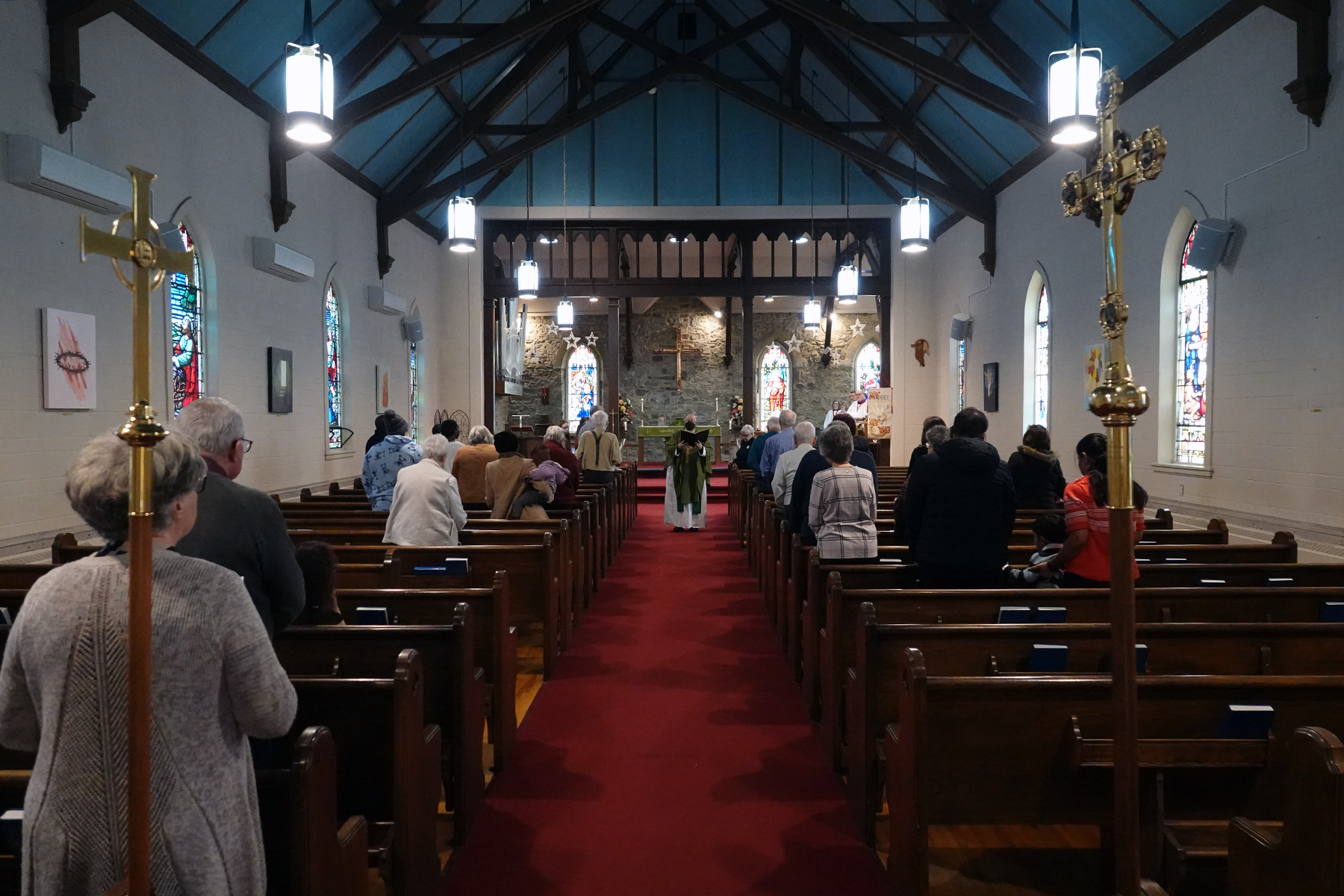Our weekly service of Sunday Prayers will be live-streamed to YouTube. The service will begin at 9:30, following some music to help us prepare to enter into worship. It will also be available afterwards for viewing at the same link.
The order of service is available here.

This Sunday we’re stepping outside of the numbered Sundays after Pentecost to keep the feast of Saint Benedict. Born at Norica just after the fall of the Western Roman Empire, he studied in Rome before retreating to Affile with a group of priests. Saint Gregory the Great tells us in his Dialogues that it was here that St. Benedict worked his first miracle, which brought notoriety. Seeking quiet and peace, he took shelter in a cave near Subiaco, and lived as a hermit.
Some years later, Benedict was invited to be the Abbot of the community of Vicovaro, where one or more of the monks hated Benedict’s way of life for the community, and decided to kill him. The story in Gregory’s Dialogues tells us that when Benedict blessed the poisoned glass of wine he had been given, making the sign of the cross over it, it shattered, spilling the wine. He returned to his cave immediately!

The story goes that Benedict founded twelve monasteries before leaving the region for Cassino. Somewhere between 525 and 529, he founded the Abbey of Montecassino, where he is said to have written the Rule – a guidebook of how the monks should live, explaining how these beginning steps will help them open themselves to God’s movement in their lives. Likely due to its balance, moderation, and reasonableness, The Rule was the foundation for thousands of religious communities in the middle ages, and remains the most commonly used and influential rule used by religious communities today.

Benedict is the patron saint of Europe. Historians point to the work of the Benedictine order over the centuries after the fall of Rome in helping to bring stability to many areas, and to the work of their libraries and schools as a vital source of knowledge and study in turbulent and uncertain times.
